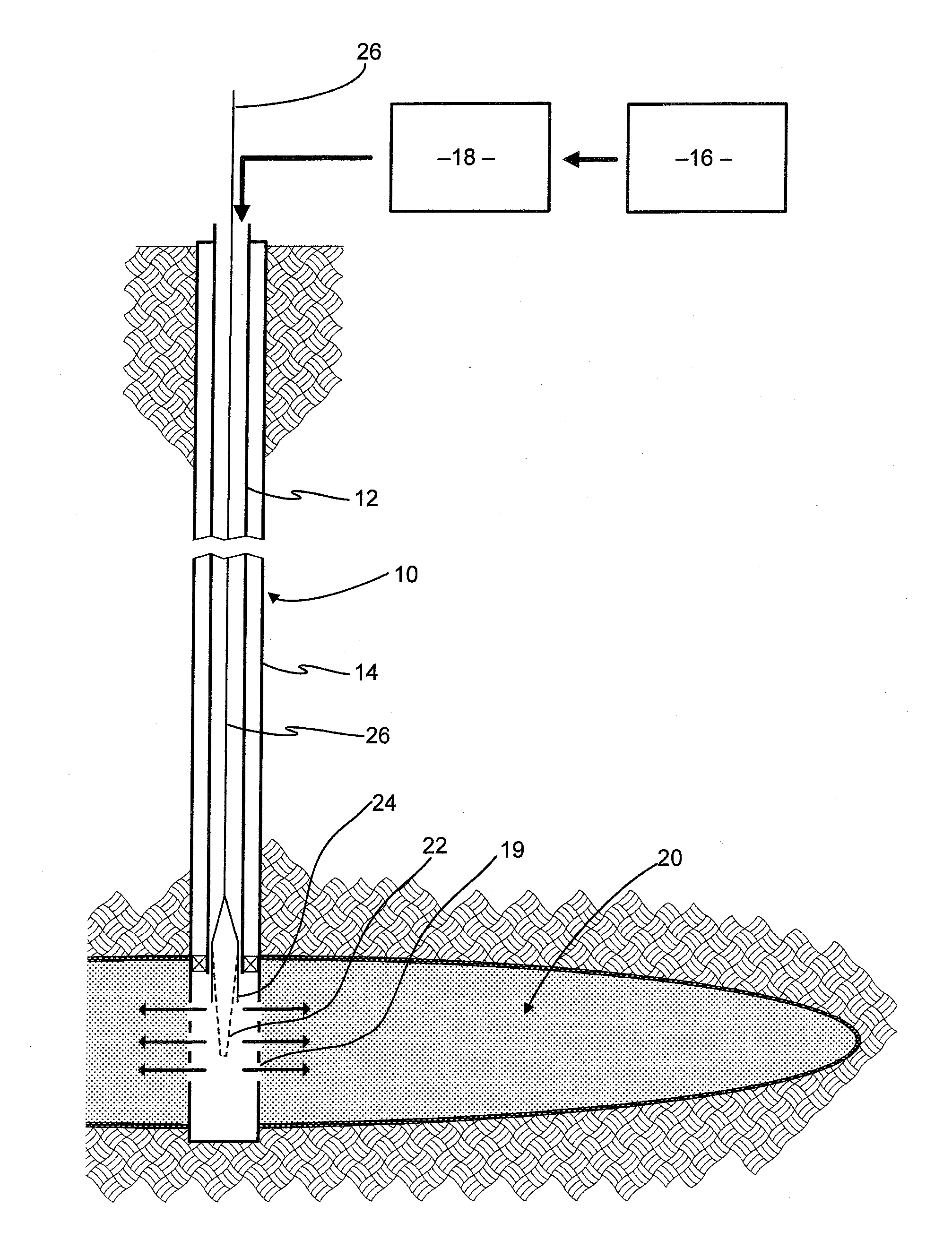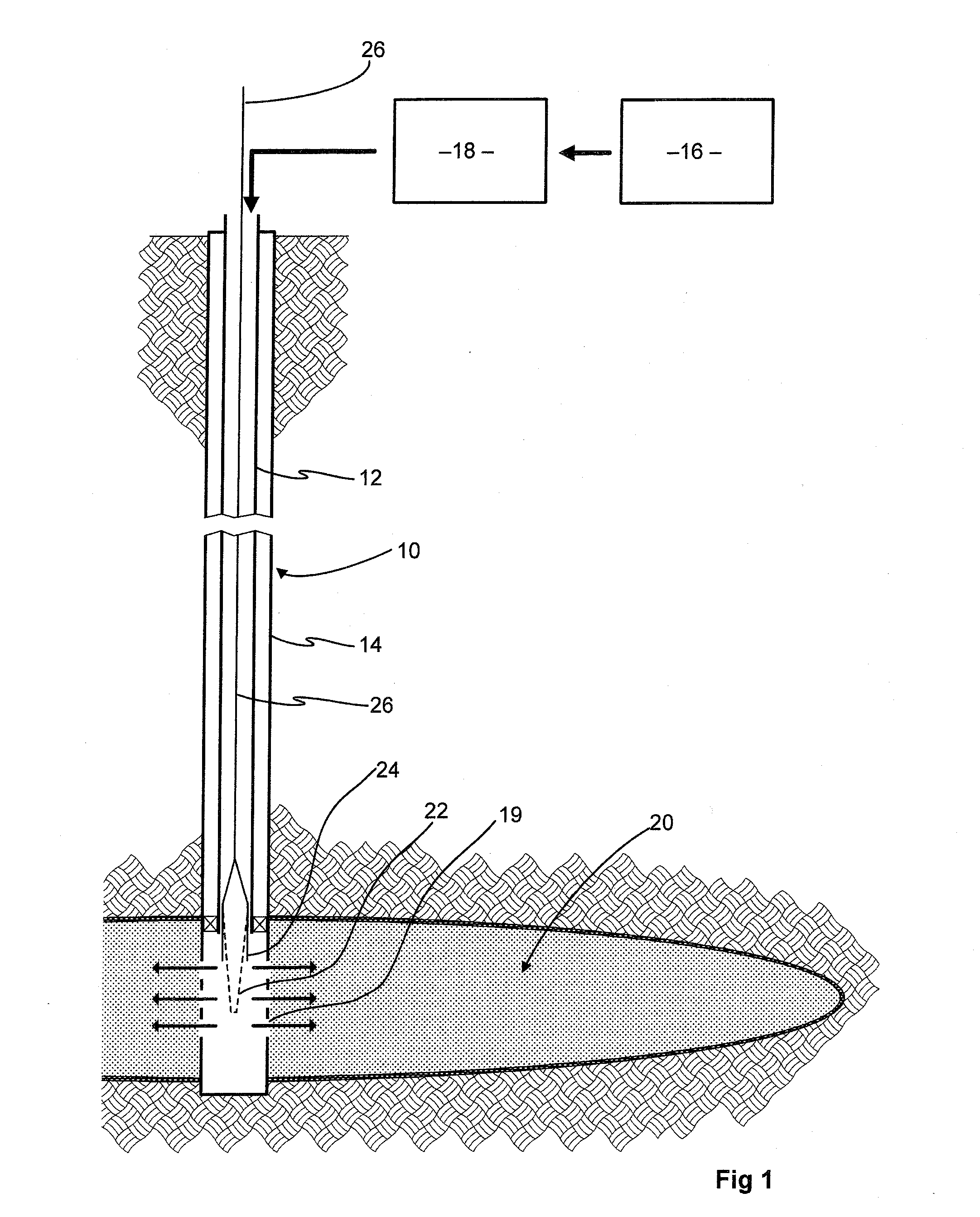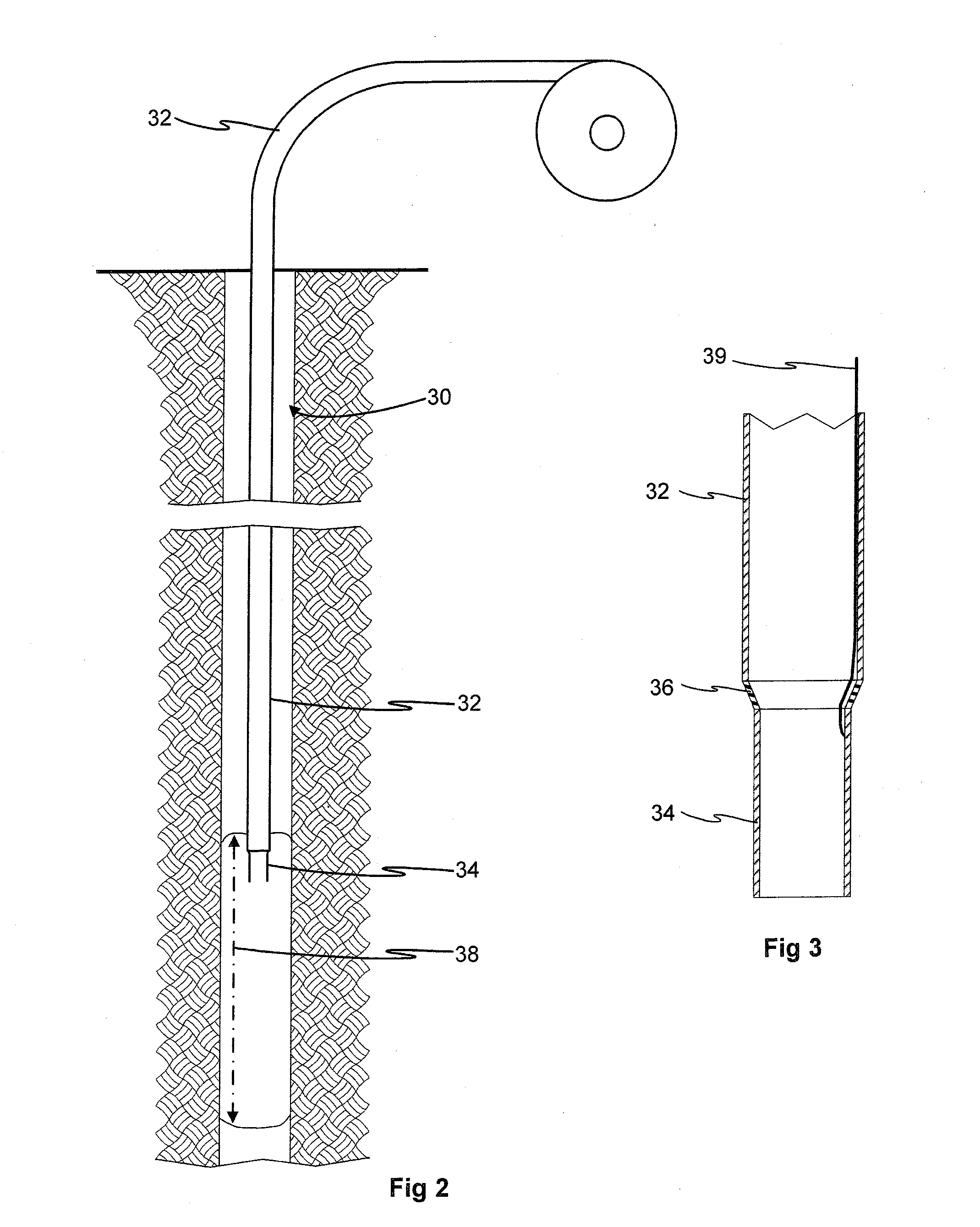Altering a composition at a location accessed through an elongate conduit
a technology of elongate conduits and compositions, applied in fluid removal, chemistry apparatus and processes, borehole/well accessories, etc., can solve the problems of difficult control of cross-linking reaction, premature gelling of cross-linkable polymer compositions, and inability to control cross-linking reaction directly, etc., to achieve the effect of reducing the number of elongated conduits, and reducing the number of elong a technology of a compositions and a technology of a compositions and a technology of a compositions and a technology of a compositions and a technology of a compositions and a technology of a location accessing and a compositions and a technology of a location accessing and a technology of a compositions and a technology of a location accessing and a technology of a conduits, which is applied in the field of elongation, can solve the problem of a a technology of a compositions and a technology of a compositions and a technology of a compositions and a technology of a compositions and a technology of a compositions and a technology of a conduit and
- Summary
- Abstract
- Description
- Claims
- Application Information
AI Technical Summary
Benefits of technology
Problems solved by technology
Method used
Image
Examples
example 1
[0034]Electrochemical experiments were carried out using an μAutolab II potentiostat (Ecochemie, Netherlands) with a standard three-electrode configuration. A 1 mm steel rod provided the counter electrode and a saturated calomel electrode (SCE, Radiometer, Copenhagen) acted as the reference. The working electrode was a glassy carbon foam.
[0035]A solution was prepared containing 0.2 M catechol and 0.625% (wt / wt) chitosan in aqueous pH 7 phosphate buffer. An oxidative current of 5 mA was passed through the solution at ambient temperature of approximately 20° C. for one hour. The solution was stirred throughout this time, after which the solution was left to stand overnight.
[0036]On application of the current, the solution in the vicinity of the electrode immediately changed from colourless to red. Eventually, the entire solution turned dark red consistent with oxidation of catechol to the corresponding quinone. At the end of the experiment, the working electrode was removed from the s...
example 2
[0038]A procedure with similar chemistry to the preceding example was used to demonstrate formation of a coating on the interior of tubing. A simple pipeline was formed from two stainless steel tubes (¼″ diameter) connected by a length of plastic (and therefore non-conducting) tubing. The first, smaller piece of stainless steel tubing acted as the working electrode and the second was the counter electrode. A silver wire reference electrode was then inserted into the pipeline to complete the electrochemical cell assembly.
[0039]In this case the aim of the experiment was to coat the walls of the tubing with the crosslinked gel. A solution containing 0.2 M catechol and 0.625% (wt / wt) chitosan in pH 7 phosphate buffer, as in the previous example, was placed in the pipeline and allowed to remain at rest. Upon application of the oxidative current (5 mA) the solution immediately changed colour indicating that the electrochemical reaction was occurring. The current was applied to the solutio...
example 3
[0040]It is known that Fe(III) (ferric) ions generated by oxidation of Fe(II) (ferrous) ions with a soluble oxidising agent (such as sodium chlorate) can bring about crosslinking of chitosan. A procedure similar to that of Example 1 was used to demonstrate cross linking by ferric ion generated electrochemically. Fe(II)sulfate was added to an aqueous solution of 1.25% (wt / wt) chitosan (in 0.1 M acetic acid). The three electrodes (working, reference and counter) as used in Example 1 were then placed into the solution and a current of 10 mA passed for 30 mins under stirred conditions. The fluid was then found to have gelled. This is consistent with the generation of Fe(III) at the electrode surface followed by chemical crosslinking of the chitosan polymer.
[0041]FIG. 1 illustrates an embodiment of the invention being used in a hydraulic fracturing operation. A wellbore 10 has tubing 12 located inside casing 14. Fracturing fluid which contains crosslinkable polymeric thickener, with part...
PUM
| Property | Measurement | Unit |
|---|---|---|
| distance | aaaaa | aaaaa |
| distance | aaaaa | aaaaa |
| distance | aaaaa | aaaaa |
Abstract
Description
Claims
Application Information
 Login to View More
Login to View More - R&D
- Intellectual Property
- Life Sciences
- Materials
- Tech Scout
- Unparalleled Data Quality
- Higher Quality Content
- 60% Fewer Hallucinations
Browse by: Latest US Patents, China's latest patents, Technical Efficacy Thesaurus, Application Domain, Technology Topic, Popular Technical Reports.
© 2025 PatSnap. All rights reserved.Legal|Privacy policy|Modern Slavery Act Transparency Statement|Sitemap|About US| Contact US: help@patsnap.com



